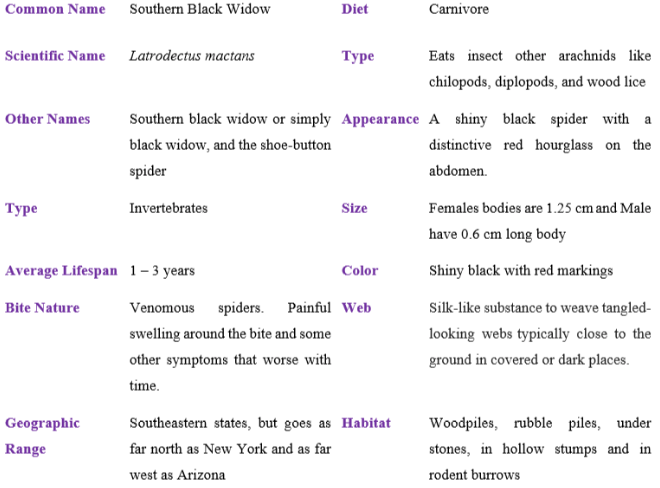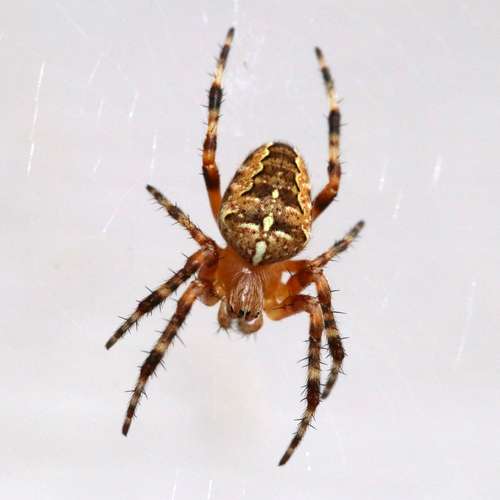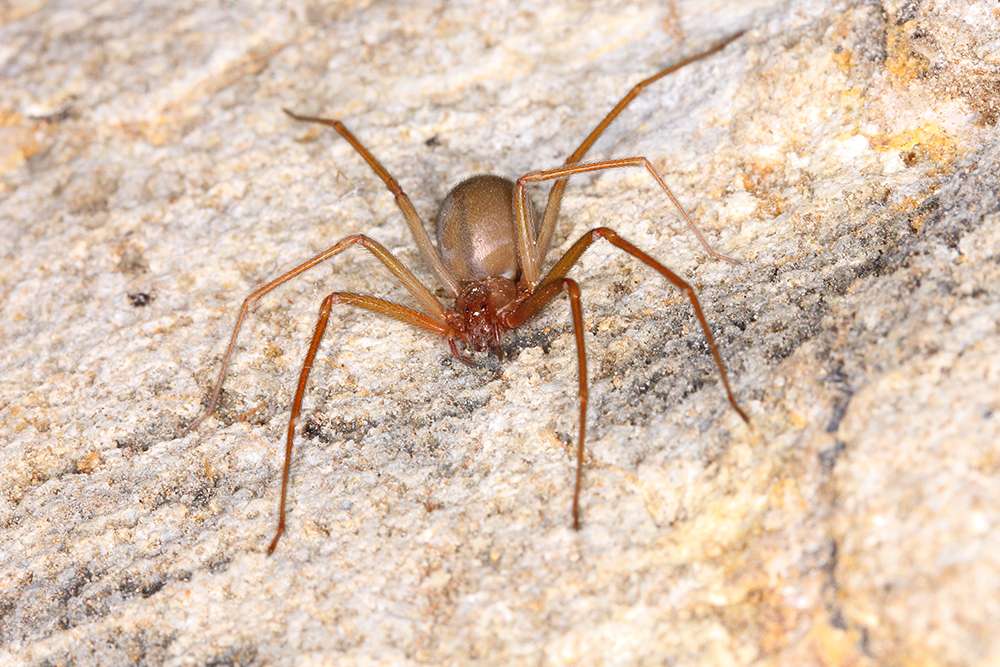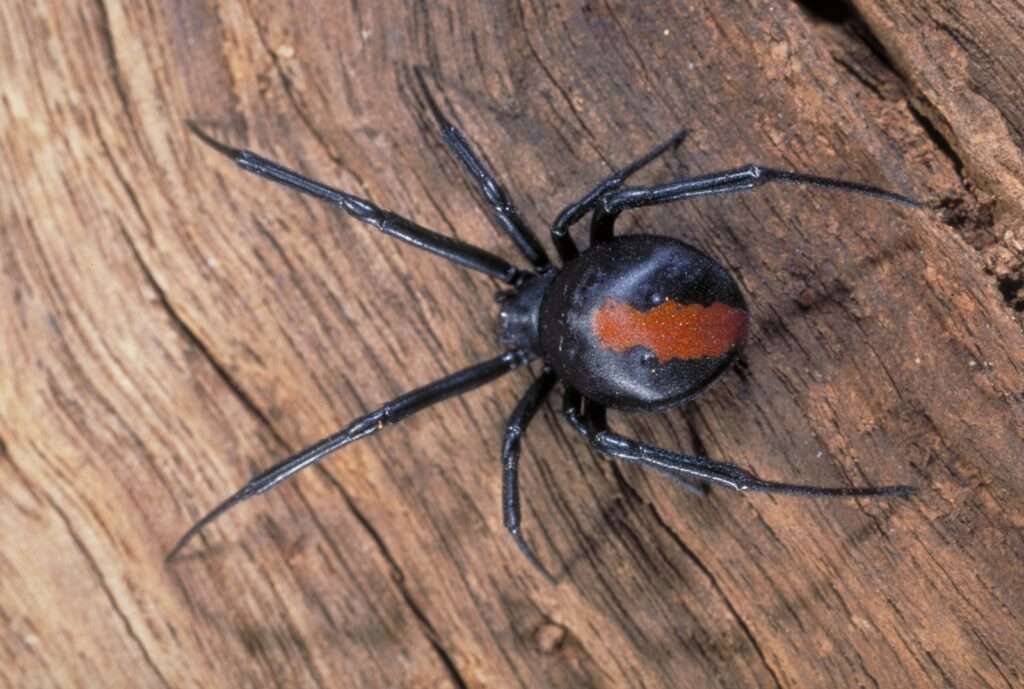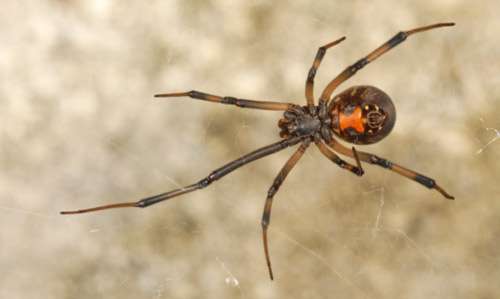
Latrodectus mactans, also referred to as the shoe-button spider and the southern black widow, is a venomous species of spider in the genus Latrodectus. The ladies are famous for their striking black and red appearance as well as the fact that occasionally they may consume their partners after mating. Native to North America, the species. The venom can induce discomfort and other symptoms, although healthy persons seldom die from it.
Habitat
With the exception of Antarctica, every continent is home to different species of widow spiders. The Southern black widow is primarily prevalent in the Southeast of the United States, though it has been documented as far north as Ohio and as far west as Texas. Spiders frequently inhabit outdoor habitats including wood and rock heaps, rat burrows, and hollow tree stumps. Basements, garages, sheds, and outhouses are examples of indoor habitats. Even though they prefer low-lying areas, you can find their web a few meters above the ground.
Physical Appearance
Size
Males and mature females have body lengths of 3-6 mm (0.12-0.24 in) and 8-13 mm (0.31-0.51 in), respectively, without the legs. Leg length in relation to the body is long.
Females
Females have an hourglass-shaped red marking on the ventral (under) side of their very rounded abdomens. They are shiny and black in appearance. Female size varies greatly, especially in egg-bearing (gravid) females. A female who is pregnant may have an abdomen that is larger than 1.25 cm (0.5 in) in diameter. Additionally, the top of the abdomen of many female widows has an orange or red patch immediately above the spinnerets.
Juveniles
Juveniles look considerably different from adults; their abdomens are gray to black, with white lines running across them and spots of yellow and orange.
Males
Males are either purple or more closely resembling the hue of juveniles.
Web
This spider’s web is a tangled, 3-dimensional cobweb made of incredibly robust silk.
Reproduction
When a man reaches maturity, he spins a web of sperm, places semen on it, and then charges the bulbs of his paypals with sperm. When a male black widow spider mates, he places his palpal bulbs into the female’s spermathecal apertures. The female lays her eggs in a globular silken container, where they are hidden and well-protected. In one summer, a female black widow spider can lay four to nine egg sacs, each holding between 100 and 400 eggs. Eggs typically take twenty to thirty days to hatch. More than 100 people surviving this technique is unusual. Only thirty will often make it through the initial molting because of cannibalism, a lack of food, and/or an inadequate habitat. Black widow spiders need two to four months to reach sexual maturity, although it usually takes them six to nine months to reach full maturity.
Feeding Habits
The hostile and solely carnivorous Latrodectus mactans. It often eats insects, but it also eats other arachnids like chilopods, diplopods, and woodlice. The black widow spider often ensnares food entangled in its web, bites it, and drags it to its hub or retreat where it consumes it. Inflicting a small incision on its victim, Latrodectus mactans then mashes it up with its cheliceral teeth, coats it with digestive enzymes, and sucks up the resulting food. The spider’s whole digestive system is located outside of its body.
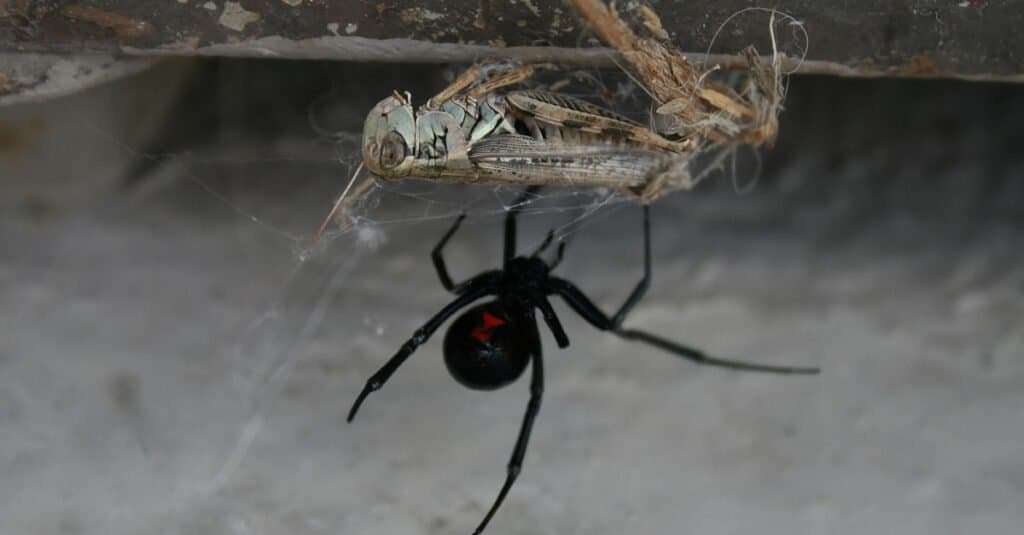
Importance in Human Life
Positive
On the plus side, Latrodectus mactans eat a tonne of dangerous insects. It eliminates bothersome flies and mosquitoes, which spread disease, as well as grasshoppers and locusts, which ruin grain crops.
Negative
If a black widow spider bites, it has probably been rubbed up against a person’s unprotected flesh, which results in a natural response—a bite of self-defense. Humans who have been bitten have excruciating abdominal wall muscle tightness. Although this spider’s poison is dangerous, it seldom results in death.
Requirements for Keeping as Pet
Enclosure
Black widow spiders can be housed in a compact space. Use a plastic container with a lid. For ventilation, make a few holes along the jar’s top wall. As an alternative, you can get your spider a critter box. Put some sand or peat moss within the enclosure. The substrates are not really crucial to your widow spider. Having the substrates makes it easier to keep your enclosure clean and lowers how often you need to clean it. Add some tree branches last. The black widow will scale the branches and weave webs there. Avoid using lengthy branches that could touch the enclosure’s lid. If you do this, the spider won’t be able to reach the lid and escape when you open it. On smooth surfaces, widow spiders are unable to ascend. They spend the most of their time online. Therefore, if you need to open the enclosure to offer them food, you don’t need to be concerned. To prevent cannibalism, never house more than one black widow in an enclosure.
Microclimates
Strong spiders are black widows. They can be stored at room temperature, which is between 20 and 25 °C (68 to 77 °F). Brown widow spiders will prefer warmer temperatures if you are keeping them. If it becomes cold where you live in the winter, you might need to provide your spider with extra heat. Use a heat mat and place it beneath the enclosure to do that. Use a thermostat or keep a close eye on the temperature to keep your black widows from becoming too hot. Additional lighting is not necessary for black widows. In fact, you ought to put it somewhere out of the sun. If you use illumination to observe your spider, be sure to switch it off after you’re finished. Otherwise, your window can become too hot from the illumination.
Feeding
Black widows consume a range of insects in nature, including flies, crickets, moths, and others. You can give your black widow spider in captivity a cricket once every week. Although black widows may kill prey that is considerably larger than they are, it is recommended to give them a cricket that is no larger than 1.5 times their size. Hunting will be simpler as a result. Grab the cricket with a pair of tweezers and place it inside the container. The black widow will quickly locate her prey and pursue it. Keep a watch on your black widow if you are adding a larger feeder bug. If you believe the prey can outmuscle your widow spider, take action.
Water
They don’t require a lot of water, black widows. You do not need to use a water dish because they receive enough water from their food. The water droplet from your weekly misting can also be consumed by the spider.
Cleaning
Every four to six months, the enclosure needs to be cleaned. Put the black widow in another temporary container after letting it climb on a stick. Wash the enclosure in soapy water, then dry it off. Rehouse your widow spider and swap out the substrates.
Table
